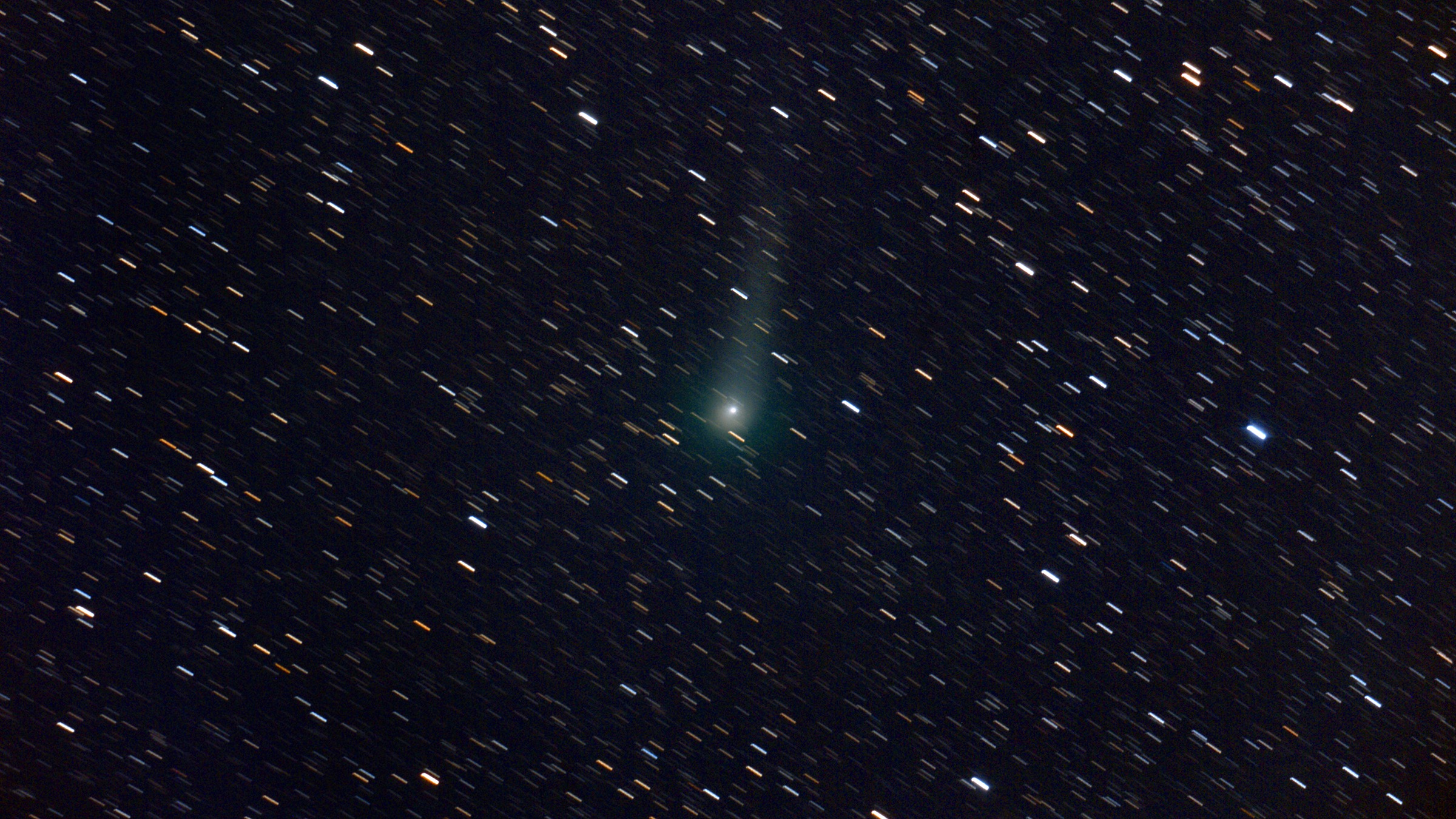Megacomet K2 caught on camera cruising through celestial equator
The comet is almost at its closest approach to Earth on July 14.
A megacomet glows in the dark in this long-exposure image captured by an astrophotographer on June 18, before its closest approach to Earth.
Comet C/2017 K2 (PANSTARRS), called K2, will swing by our planet on Wednesday (July 13) nearly twice as far away from Earth as our planet is from the sun. But the comet, which may be much as 100 miles (160 kilometers) wide, is still spewing enough dust to show in the view of telescopes.
"Look for a six-inch coma," advised John Chumack of galacticimages.com, who found the massive comet in the constellation Ophiuchus from a dark location in Yellow Springs, Ohio. (A coma is the cloud of gas and dust a comet shoots out as the sun warms its surface and causes particles and molecules to rise into space.)
Related: Giant comet was active way farther from the sun than expected, scientists confirm

Looking for a telescope for the next skywatching event? We recommend the Celestron Astro Fi 102 as the top pick in our best beginner's telescope guide.
At the time Chumack photographed the comet, it was at the celestial equator in constellation Ophiuchus. It was visible in both a six-inch reflector and an eight-inch Schmidt-Cassegrain telescope, he added.
But the beauty shot came from a slightly larger 12-inch F4 Newtonian reflector, Chumack added. Other equipment involved in the 31-minute exposure included a Bisque ME mount and a modified Canon 6D DSLR camera.
Chumack estimated K2 had a magnitude of 9.7 when he caught it on camera, and EarthSky estimates the comet may get as bright as magnitude 7 by the end of 2022. By comparison, magnitude 6 is about the dimmest stars available to your naked eye, although the comet would be more difficult to see as it is diffuse.
Breaking space news, the latest updates on rocket launches, skywatching events and more!
If you're looking for binoculars or a telescope to see the comet in the night sky, check out our guide for the best binocular deals and the best telescope deals now. If you need equipment to capture the moment, consider our guides for the best cameras for astrophotography and the best lenses for astrophotography to make sure you're ready for the next comet sighting.
Editor's Note: If you snap a photo of the comet and would like to share it with Space.com's readers, send your photo(s), comments, and your name and location to spacephotos@space.com.
Follow Elizabeth Howell on Twitter @howellspace. Follow us on Twitter @Spacedotcom and on Facebook.

Elizabeth Howell (she/her), Ph.D., was a staff writer in the spaceflight channel between 2022 and 2024 specializing in Canadian space news. She was contributing writer for Space.com for 10 years from 2012 to 2024. Elizabeth's reporting includes multiple exclusives with the White House, leading world coverage about a lost-and-found space tomato on the International Space Station, witnessing five human spaceflight launches on two continents, flying parabolic, working inside a spacesuit, and participating in a simulated Mars mission. Her latest book, "Why Am I Taller?" (ECW Press, 2022) is co-written with astronaut Dave Williams.

